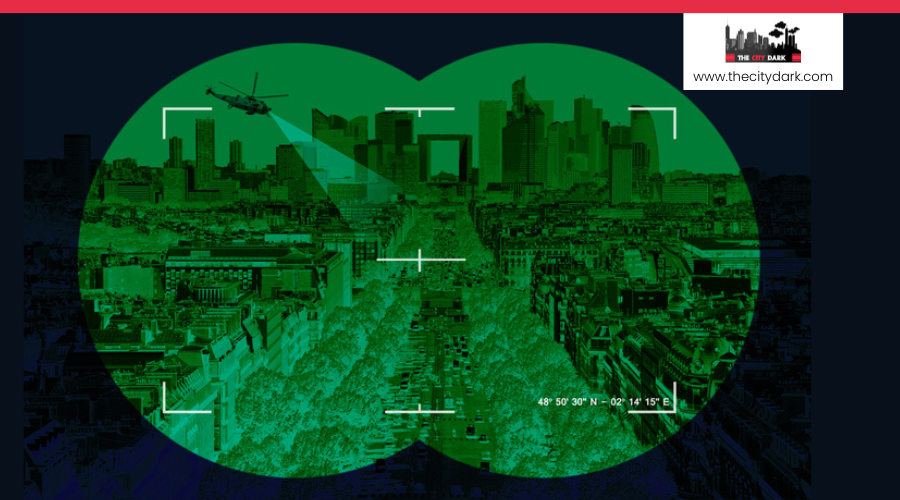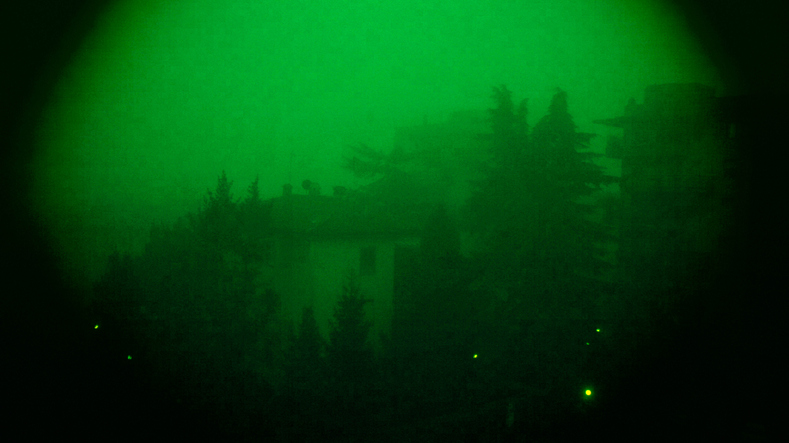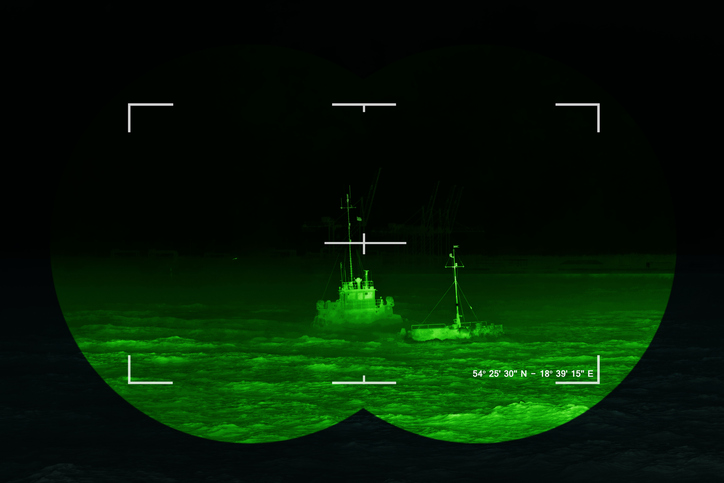Night vision greatly aids in responding to natural disasters. It proves crucial for finding people caught in rubble or dangerous waters during events like earthquakes and floods. This technology allows clear vision in total darkness, thick forests, or large fields, improving chances of successful rescues. It enables the identification of obstacles, hidden threats, and individuals in tough spots, making rescues faster and safer. Proper training ensures readiness for low-light conditions. Moreover, advancements and drones promise to boost its utility. As technology advances, the future of rescue missions looks even more promising.
Key Takeaways
- Night vision lets us see clearly in complete darkness, helping us find and save people quickly.
- It makes search and rescue work better by showing us what’s in the way or hidden in tough spots.
- With thermal imaging, we can quickly find people trapped in disasters like earthquakes by seeing their body heat.
- Drones with night vision can cover a lot of ground and give us views we wouldn’t have otherwise, making a big difference in natural disaster responses.
- New developments in night vision are giving us better range and clearer pictures, making rescue missions more effective even when conditions are bad.
Overview of Night Vision
Through night vision technology, you can see in almost complete darkness. This technology amplifies the little light available, allowing you to see at night as if it were dusk. It’s especially useful during search and rescue missions after natural disasters. When floods or hurricanes hit, night vision helps save lives.
Every second matters in these situations. Night vision technology not only lights the way but also speeds up the search for people in danger. It helps rescuers find those trapped or navigate dangerous areas quickly and safely.
Night vision devices do more than just improve visibility. They enhance search and rescue operations, increase survival chances for disaster victims, and reduce the disaster’s overall impact. For skilled responders, night vision technology is a hope, guiding to safety in the darkness.
Night Vision in Earthquakes
When an earthquake hits, navigating debris is hard. Night vision technology allows clear sight in darkness, aiding in finding and rescuing trapped people. This technology is crucial for saving lives after an earthquake.
Earthquake Rescue Operations
In the wake of an earthquake, the use of night vision technology is crucial for rescuers. It helps them quickly find and rescue people trapped under debris or hidden in shadowed areas. Night vision tools are key in spotting objects in total darkness, which is a frequent challenge during earthquake rescues. These devices are especially useful in dense forests or open fields where it’s hard to see, making rescue operations faster and more effective. Medical teams also benefit from night vision, as it allows them to promptly assist survivors in dim conditions.
By integrating night vision technology into earthquake response efforts, rescuers can see better, improving the odds of locating those who are lost or afraid. Night vision significantly boosts the efficiency and success of search and rescue missions, leading to more lives saved.
Debris Navigation Challenges
Navigating debris after earthquakes, night vision proves crucial. Darkness, covering everything, transforms night vision into a lifesaver, revealing hidden objects and people. This technology is key in debris-filled areas, where conventional lights fail. It speeds up finding those trapped, boosting rescue chances. In forests or fields, dimmed by quake aftermath, night vision is vital. It guides rescuers to those lost or frightened, helping medics deliver fast care. Night vision’s clear sight ensures quick action, saving more lives in chaos.
Flood Rescue Operations
In flood rescue, night vision is key. It lights the dark, helping rescuers see those stuck in floods. This tech is crucial for safely navigating dangerous waters, spotting hidden dangers like roads and power lines. It also makes rescuing at night better, as rescuers can pinpoint and predict where people are more accurately, raising the chances of saving them.
Enhancing Visibility in Darkness
In the depth of night, responding to flood disasters, night vision is essential. It transforms the unseen into the seen, making it possible to find and save those caught in the dark. This technology isn’t merely a tool; it’s a beacon in the night. By cutting through darkness, lives are saved. Night vision is crucial for:
- Simplicity in saving lives by spotting those in need in complete darkness.
- Identifying obstacles like submerged vehicles or debris for safer operations.
- The ability to anticipate the movement of water and trapped individuals for effective rescues.
In the darkest moments, when time is of the essence, the ability to see through the veil of night can shift the scale from despair to hope. Night vision, by making the invisible visible, becomes essential in flood disaster response, turning potential tragedy into a chance for salvation.
Navigating Hazardous Waters
Navigating through dangerous floodwaters, rescuers use night vision to safely find and help people in peril. After a disaster, these tools are key for spotting hidden dangers like submerged roads or electric lines, protecting everyone involved. Night vision improves rescue efforts, making it easier to locate individuals stuck in hard-to-reach places. It allows for quick action by predicting where people might be in the water.
Constant watch in dim conditions, enabled by night vision, increases the chance of successful rescues during floods. In short, night vision is vital for moving through treacherous waters to rescue lives.
Coordinating Nighttime Rescues
Night vision devices are crucial in flood rescue operations at night, helping teams quickly find and assist those trapped. These devices are more than just tools; they are lifelines that transform the darkest nights into chances for survival.
- Picture the terror of being caught in floodwaters at night, uncertain of rescue. Night vision offers a glimmer of hope, leading rescuers to those in need.
- The appearance of a rescuer, seen through night vision, often signals the end of a nightmare.
- The knowledge that rescuers can pierce the darkness to locate you can change a night filled with fear into a morning of relief.
Using night vision for nighttime rescues is not only a tactical approach; it’s a way to provide hope and save lives when time is of the essence.
Hurricanes and Visibility Challenges
In the chaos following a hurricane, seeing clearly becomes a challenge that can thwart rescue missions. Night vision technology becomes essential for emergency teams. This technology allows rescuers to move through darkness when natural light fails and ordinary sight is not enough. Hurricanes can erase familiar markers and spread debris widely, making it nearly impossible to locate trapped individuals without night vision aids. These devices are crucial, enabling rescue teams to see in almost complete darkness and to identify heat signatures, which can lead to finding people hidden beneath rubble or in storm-blocked areas.
The value of night vision in these situations is immense. It not only makes rescue workers safer by warning them of hazards beforehand but also significantly increases the pace and effectiveness of search and rescue efforts. Night vision tools ensure quicker assistance to those in need, impacting significantly in the hurricane’s aftermath. As visibility diminishes and conditions deteriorate, dependence on night vision technology grows, underlining its vital role in saving lives during natural disasters.
Technological Advancements
Advancements in night vision technology have greatly improved rescue teams’ ability to find survivors after natural disasters. These devices, initially developed for military use, can now make images tens of thousands of times brighter, allowing visibility in almost complete darkness. Thermal imaging cameras, especially, have proven crucial for spotting the heat signatures of people buried under rubble or concealed in smoke. This technology enables quick and efficient rescues, even in conditions without any natural light.
- Saving Lives: The capability to see heat from humans has transformed search and rescue missions. What once was a desperate race against time has become a more hopeful effort.
- Rapid Decision Making: Thermal imaging lets rescue teams and firefighters evaluate situations from a distance. This ability to quickly understand what’s happening is essential in emergencies.
- Navigating the Darkness: Night vision gives rescuers the vision to move through total darkness, making sure no one is overlooked.
These advances have turned night vision tools from military equipment into vital devices for saving lives in natural disasters.
Training for Disaster Response
To save lives in natural disasters, disaster response teams need intense training with night vision gear. This training ensures you can navigate and operate in the low light often found during these events. Using night vision is more than turning it on; it’s about knowing its features to help in search and rescue.
Your training sharpens your night vision skills, key for mission success. You’ll master switching between night vision and regular sight, crucial for awareness and safety. The training isn’t just about the gear; it’s about staying oriented and making fast, smart choices under pressure.
Case Studies
Exploring real-world scenarios reveals the transformative power of night vision technology in natural disaster rescues. Night vision isn’t just theoretical; it’s a proven lifesaver when every second is critical. Devices like thermal imaging cameras have played key roles in numerous rescues:
- In earthquakes, rescuers have pinpointed trapped individuals under rubble using thermal imaging, speeding up the rescue process.
- Flood-stricken areas have seen night vision guide rescue teams to people stranded in darkness, reducing the risks of delay.
- Hurricanes leave chaos, but night vision devices have swiftly located survivors, even under the toughest conditions.
These examples show night vision’s pivotal role in natural disaster response. By improving rescue teams’ visibility in adverse conditions, night vision not only makes search and evacuation faster but also increases survival chances during earthquakes, floods, and hurricanes.
Future Prospects
The horizon of night vision technology in natural disaster response is expanding fast. Future innovations are set to change how rescuers work at night. Imagine detecting heat from far away, even under tough conditions. This is the future of night vision technology, where advancements will improve range and clarity. This will make it easier to find survivors trapped under rubble or hidden in dense forests at night.
But there’s more. Artificial intelligence and machine learning will elevate night vision data analysis. This means real-time insights that were once impossible, aiding quicker, informed decisions during rescues. Consider drones with night vision, flying over disaster sites. They provide unmatched coverage and views for more effective response efforts.
Also, the move towards light and portable night vision solutions means carrying this advanced technology easily. This ensures readiness for any disaster. The future of night vision in natural disaster response is promising. It brings hope to the darkest nights.
Frequently Asked Questions
How Effective Is Night Vision?
It’s clear, technology has improved it for moving through nature and less harm to animals. Yet, not thinking of disaster help, it remains a flexible tool.
Why Is Night Vision Illegal?
Night vision, outlawed in certain locales, stirs privacy worries, disturbs nature, battles its own flaws. Laws curb its abuse, harsh penalties await the caught.
Do Night Vision Goggles Work in Total Darkness?
Night vision goggles use infrared to see in pitch black. They boost what little light there is. Sometimes, it’s harder to see because of how eyes adjust to darkness. But, you will see in the dark.
Is It Legal to Own Military Grade Night Vision?
In the US, owning military-grade night vision as a civilian is permissible. However, heed export limitations. The advancements in this technology bring undeniable advantages. Always ensure compliance with regulations.
Conclusion
Night vision revolutionizes natural disaster response, turning night into day. From earthquakes to hurricanes, it saves lives, making every second count. Technology and training enhance effectiveness. Success stories abound, and the future shines bright. Night-time rescues grow safer, marking a turning point in saving lives.



